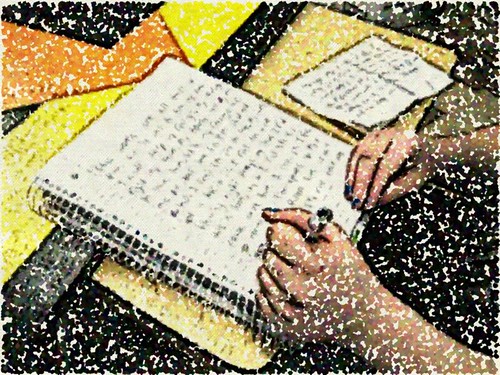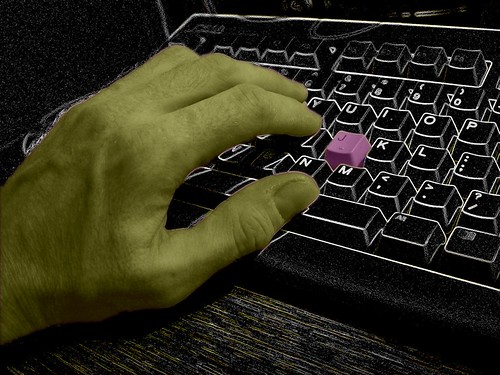When does a manuscript cross the line between short story and novel? How long are most books in your genre? When is it a good idea to step outside the box and break the rules? Length is a huge issue in writing books -- make sure you give it the proper respect.
Measuring Length
One hundred pages, eighty thousand words, two thousand lines of text -- the first step in measuring length is using the right yardstick. Lots of writers know exactly how many pages they've written in how many chapters; some can even tell you the amount of days that pass in their story, or maybe how long (to the minute) the book took to write. It's all well and good to know your page count, average chapter length and all those other fun statistics, but when it comes to determining book length there's only one measurement: word count.
Thanks to modern-day computers, a great many writers can simply choose an option and find out exactly how many words are in their manuscript (it's under Tools). But it's not a bad idea to know how to figure out how to determine word count without modern technology -- just in case.
On pages designed one with standard one-inch margins and written in a double-spaced, 12-point non-proportional font, you'll have an average of 250 words on each page. Count the pages, do the math, and you've got your word count.
But let's not forget, we live in a word with modern technology...and the Internet. If you've got to have an accurate word count and your software won't play nice, look for an online word count tool to get the job done.
How Long is Too Long...Or Too Short?
Do you have a short story, a novella, a full-length novel? Does your word count match your genre? There are no hard-and-fast rules in self-publishing, but it's not a bad idea to know what the competition is going to be putting out. Knowing the industry standards for word length gives you an edge, because you'll know how the traditionally-published are playing the game.
Traditionally, short stories fall between 2,000 and 7,000 words, while novellas begin at 7,000 and start to become too big at 17,000 words.Young adult novels generally fall between 50,000 and 60,000 words, while full-length novels for adults are generally around 80,000 to 100,000. Novels over 100,000 words in length are usually considered to be epic novels, and they can spring up in any genre.
You don't always have to play by the rules. Remember that your story should be only as long as it needs to be to tell the whole story. Good books are allowed to break the rules, and great books usually end up making them. Respect and know your word count, but above all respect the story you've got to tell -- because that's what really matters to readers. Mainly, you need to know your word count so you know exactly how to classify and market your book. Don't advertise a novella when you've written a 200,000-word monster.
Measuring Length
One hundred pages, eighty thousand words, two thousand lines of text -- the first step in measuring length is using the right yardstick. Lots of writers know exactly how many pages they've written in how many chapters; some can even tell you the amount of days that pass in their story, or maybe how long (to the minute) the book took to write. It's all well and good to know your page count, average chapter length and all those other fun statistics, but when it comes to determining book length there's only one measurement: word count.
Thanks to modern-day computers, a great many writers can simply choose an option and find out exactly how many words are in their manuscript (it's under Tools). But it's not a bad idea to know how to figure out how to determine word count without modern technology -- just in case.
On pages designed one with standard one-inch margins and written in a double-spaced, 12-point non-proportional font, you'll have an average of 250 words on each page. Count the pages, do the math, and you've got your word count.
But let's not forget, we live in a word with modern technology...and the Internet. If you've got to have an accurate word count and your software won't play nice, look for an online word count tool to get the job done.
How Long is Too Long...Or Too Short?
Do you have a short story, a novella, a full-length novel? Does your word count match your genre? There are no hard-and-fast rules in self-publishing, but it's not a bad idea to know what the competition is going to be putting out. Knowing the industry standards for word length gives you an edge, because you'll know how the traditionally-published are playing the game.
Traditionally, short stories fall between 2,000 and 7,000 words, while novellas begin at 7,000 and start to become too big at 17,000 words.Young adult novels generally fall between 50,000 and 60,000 words, while full-length novels for adults are generally around 80,000 to 100,000. Novels over 100,000 words in length are usually considered to be epic novels, and they can spring up in any genre.
You don't always have to play by the rules. Remember that your story should be only as long as it needs to be to tell the whole story. Good books are allowed to break the rules, and great books usually end up making them. Respect and know your word count, but above all respect the story you've got to tell -- because that's what really matters to readers. Mainly, you need to know your word count so you know exactly how to classify and market your book. Don't advertise a novella when you've written a 200,000-word monster.

























